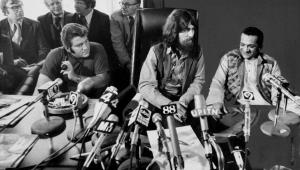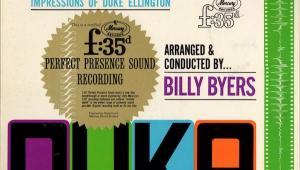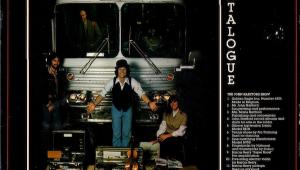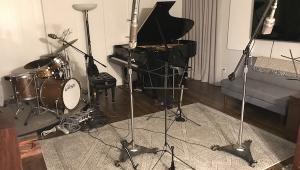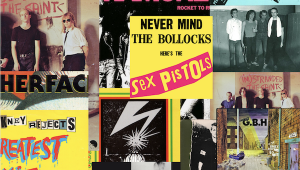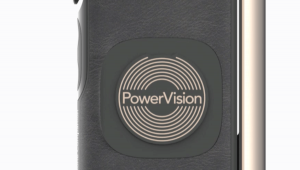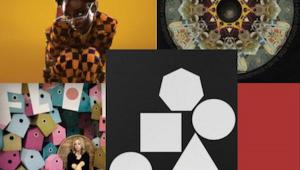New Orleans Music Festival Turns 40 Part 2
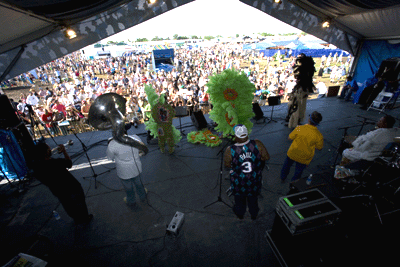
Our Man in New Orleans Roger Hahn concludes his report from the New Orleans Jazz and Heritage Festival 2009 and meditates on its future. You'll think you went!-ed.
New marketing trends had begun to establish an exploitable connection between highly educated consumers with gobs of disposable income and their fascination for the aura of “authenticity” naturally connected to the “roots” music world.
Corporate leaders began to understand this, too. In 1996, one of the world’s largest software vendors, Computer Associates, began holding its annual trade show in New Orleans and by 1998, had specifically connected attendance at the trade show with a Jazz Fest hospitality tent on festival grounds, spawning an unlikely influx of logo-bearing, polo-shirted Computer Associates employees.
The company also made a bid for festival naming rights that year, but producers proved unwilling. The following year, Computer Associates pulled up stakes and moved on.
The year of the new millennium, however, provided an opportunity for the sharpest break in Jazz Fest’s decade-long transition from traditional celebration to contemporary phenomenon. Jazz Fest 2000 was the first year a tented Acura showroom, complete with new Acura car models, glossy brochures, and eagerly awaiting sales folks, appeared as a permanent fixture on festival grounds.
In return, the company agreed to sponsor the festival’s main stage (redesigning it with billowing wings that boasted Acura logos) and privately made a deal with Jazz Fest producers to hold a series of Jazz Fest-like concerts across the South intended exclusively for Acura staff, customers, and potential customers.
To top off the deal, Jazz Fest producers arranged to hire Sting as the new Acura Stage headliner that year, reportedly luring him with an extremely lucrative offer specifically for this performance, including expenses to fly him and his band from the rehearsals he had set up in Hawaii to prepare for an upcoming tour.
Displeasure among the Jazz Fest faithful could not have been more pronounced, with a snapshot circulating the Internet claiming to show a brand new Acura sedan parked in producer Quint Davis’ personal parking space, providing further alleged evidence of Acura’s pernicious corporate buy-off.
The next year, in 2001, Jazz Fest’s new “bigger is better” ethic produced a near-disaster as 160,000 music fans jammed the festival groundbreaking a previous single-day record of 98,000with closing headliners The Dave Matthews Band and New Orleans-bred rapper Mystikal performing on stages that backed up on each other; the combined crowd creating a rare and frightening instance of human gridlock.
Overall attendance then declined for two years. This was a result, producers claimed, of post-9/11 ennui and the general populace’s fear of flying. The suggestion that producers might themselves be at fault, having turned an intimate counter-cultural gathering into a hyper-commercialized extravaganza, with an increasing lack of appeal to long-time fest fans, was never considered.
And then, the unthinkable happened. In 1994, rain descended on the city, causing one day to be cancelled entirely and severely foreshortening another. When the receipts for that year were totaled up, it turned out producers had lost $900,000. Again, the notion that running a festival increasingly built around high-priced national headliners (who get paid regardless of the weather) might not be the wisest course of action was completely ignored.
Instead, the New Orleans Jazz & Heritage Foundation, legal proprietors of the festival, threatened to fire the team that had been producing the festival since its inception and bring in younger, more-powerful managers.
Desperately scrambling to maintain their hold on the festival, in-house producers formed a partnership with the concert-production arm of AEG, a multi-national powerhouse with major interests in sports, entertainment, and facility ownership and management.
2005 saw the introduction of the new AEG-influenced formula: mainstream rock and country acts along with a broader array of dependable commercial draws for black and youth audiences; more corporate sponsorships; VIP ticket packages; dramatically raised ticket prices; more-aggressive marketing.
Oddly enough, it’s a formula that seems to work pretty well. Even with the intrusion of Hurricane Katrina and The Year of the Great Flood, Jazz Fest now feels like a stabilized mega-event, an exploded version of the original conception, tailored to the legacy of both the Jazz & Heritage Festival and 21st-century commercial dynamics.
The economic success of this year’s event is proof enough. Even with a worldwide economic collapse, the festival sold a substantial number of tickets to an audience that appeared to be almost equally divided between locals and visitors from Europe, the U.S., and the Gulf Coast region.
But the road from cultural celebration to stabilized cultural institution has not been traveled without incurring a few losses.
Twenty years ago, the festival was entirely contained on the grass-and-dirt infield of the Fair Grounds horseracing track; now it spills out onto an expanse of asphalt half-again the size of the infield. Twenty years ago, the event felt like an annual “gathering of the tribes,” with fervent culture seekers dominating the audience; now it feels more like a shopping mall experience, with crowds of consumers replacing tribes and the curious replacing the devoted.
What once seemed a unique focus on traditions now feels more like a generic focus on market segments; what once were intimate music settings have now become big-stage, mass-audience, multimedia displays. The overall effect of this can be disconcerting.
Many locals questioned the booking this year of Jon Bon Jovi as featured headliner, but a local woman who wrote the Times-Picayune shortly after the festival accurately framed the controversy in its larger context.
A long-time fan of New Orleans icon Dr. John, she wrote:
“I grew up with his music. Every year at Jazz Fest, his funky, unique sound reminds me why I love this city. [But] this year I felt like a foreigner in my own hometown amid the crowd of Bon Jovi fans. I was like a tour guide trying to explain to visitors around me what makes the Doctor so special … [And] unfortunately, when Dr. John hit the stage, I could barely hear him. Most of the fans were just biding their time waiting for Bon Jovi. How sad. Dr. John sensed this. His set lacked the mojo it has commanded in the past. The Bon Jovi fans, God bless them, just didn’t get it.”
A far cry, indeed, from a Dr. John performance I attended at Jazz Fest in the early 1990s when he pulled out all the stops, filling the stage with odd characters, conjuring his Night Tripper persona, and finally, inviting a belly-dancing snake handler, reptile draped fully across her shoulders and arms, to display her art center-stage.
There’s also no getting around the fact that the generation of locally bred and musically unique New Orleans icons, Dr. John included, is becoming slowly depleted. In the 1990s, the last two figureheads of the traditional New Orleans jazz revival, clarinetist Willie Humphrey and his brother, trumpeter Percy Humphrey, passed away.
Lately, it’s been the generation of R&B pioneers that’s disappearing, with guitarist and vocalist Snooks Eaglin and pianist, singer, and composer Eddie Bo passing away just before and after Mardi Gras this year.
While direct links still remain to the unbroken chain of New Orleans musical heritage, those links are becoming fewer and weaker as time goes by.
“Jazz Fest is still a handmade festival,” festival director Quint Davis told the Times-Picayune in his annual Jazz Fest promo interview this year, “the food, the signs, the food booths. It’s not slick. It’s still charmingit’s still a folk event, even though it’s big. It’s folksy, but underneath is one of the most complex infrastructures you can imagine … And it runs on time. We have hundreds of New Orleans bands starting and ending on time. Think about the miracle of that!”
Both parts of Quint Davis’ boosterism remain absolutely true 40 years onboth the charming miracle of it and the underlying complexity of this extraordinary event.
A small city of somewhere between 40,000 and 90,000 people (plus another, what, maybe 5,000 workers, volunteers, etc.?) arises in the spring, like an Arabian mirage, within the confines of an old Southern horse-racing track, cranks like a mother from 11 to 7 for seven days, then disappears until next year.
A small city of tens of thousands of people who have arrived from all corners of the country and various hip quarters around the world, but who all appear already to know each other, at least subliminally.
For example: It’s the last Sunday of Jazz Fest and I’m standing with a crowd of maybe a hundred or so in front of the Fais Do-Do Stagea kind of rustic outdoor setting in the middle of the race track where most zydeco, Cajun, and old-time country bands performto hear Guy Clark, surely one of the world’s greatest living folk poets.
It’s late afternoon, and for six-and-a-half days the weather has been unusually outstandinga little warm, but not hot; a little humid, but never stifling.
This afternoon, though, there’s a cold front coming in from the northwest and around 4:30 you can see the wind change the direction of the banners strung all around the festival grounds, clouds beginning to billow on the horizon.
But who cares? It’s been a six-and-a-half-day marathon of food, music, and people-watching with the finish line finally in sight. And besides, as somebody in the crowd gleefully shouts to a friend, “It’s not really Jazz Fest until it rains!”
Which it starts to do, about three songs into Guy Clarks’ setbut nobody’s moving, which sort of takes the weathered old songwriter and his traveling/performing companion, Verlon Thompson, a little bit by surprise, but it’s a pleasant surprise.
So Guy hands it off to Verlon for a couple of songs, one of which is an old country hoedown about “the Louisiana side,” and then Guy comes back on with “Dublin Blues,” the rain starting to really soak in as he sings a couple of that song’s amazing verses:
“Well, I have been to Fort Worth
And I have been to Spain,
And I have been too proud
To come in out of the rain.
“And I have seen the David
And the Mona Lisa, too.
I’ve even heard Doc Watson
Play ‘Columbus Stockade Blues.’”
Which is double spine-tingling, not only for the rain reference (which gets a big cheer, naturally), but also because Doc Watson just played the Blues Tent at this year’s Jazz Fest two days before (a rare “folk” booking, one of this year’s thematic threads).
And when the song is done, the woman standing next to me in a rain parka (a practical sort) asks me who that guy isnot Guy Clark, but Verlon Thompson (whose name I couldn’t quite remember at the moment).
And I tell her how amazing I think Guy Clark is, and she says she’s never heard of him, but she knows his song “Boats to Build” from Jimmy Buffett and she knew I was a fan because she heard me singing along with the chorus to “Boats to Build” just like she was.
Then she asked if I had heard the bluegrass/Texas swing duo Jeff & Vida on the Gentilly Stage earlier in the day? (I had, and told her I already knew them from folk circles, and because they were based in New Orleans for a short while.)
And she tells me how she comes to Jazz Fest every year all the way from Seattle just to discover new music like Guy Clark and Jeff & Vida. When I tell her I live in New Orleans, she tells me how lucky I am. We’ve been standing next to each other for fifteen minutes, but we’re already distant cousins.
No question about it, thoughmoments like that happen within the omnipresent context of an event that has achieved the scale of a massive spectacle.
It’s not only the big crowds in general, especially on weekend days, but gatherings of fans packed in shoulder-to-shoulder for the biggest acts on the big Acura stage, creating a sea of fans stretching almost as far as the eye can seeat least a football field deep and three-quarters-of-a-football-field wide.
Such was the case for Neil Young, whose two-hour slot just before The Neville Brothers closed out the Fest on the afternoon of the second Sunday produced what may have been the event’s most striking performance, a non-stop barrage of rollicking rock’n’roll from Neil the Mad Rocker.
Wedged in at the edge of the crowd down front, where I could barely see the microphone at the front edge of the stage and had to watch mostly on the big video screen above me, I listened for a couple of minutes at the beginning of the set, curious to see which Neil Young would show up (the Crazy Horse wildman, the Mad Rocker, or the reformed folkie), then beat it out of there for more peaceful surroundings (I would have stayed there until the final Neil note faded outed).
The question of scale transforms the Jazz Fest experience in myriad ways. Never mind waiting in line on crowded days to use the Port-o-Potties or standing in a bottleneck of impatient fans as foot traffic is halted at select crossing points so a motorized vehicle can pass by on the dirt of the race course. Or the thicket of wandering festival goers that has to be negotiated on each trek across the racecourse infield.
The most noticeable effect of inflated scale has been the loss of intimacy at performance venues, where crowds for popular acts are mostly huge, the movement of entrance and exit a constant distraction, the stage mostly set back and away from the audience, and the sound quality ranging from acceptable to distorted, depending on the stage.
There is also a frequent sound bleed-over problem, where the largest stages, depending on how the wind blows, occasionally send billowing waves of sound across the infield, drowning out quieter moments on smaller stages.
The hyper-commercialism of Jazz Fest, through an overall price structure for lodging, admission, increased food prices, and other amenities tends to screen out participants based on their access to expendable income.
The working-class black community in New Orleans, source for much of the local culture that is the festival’s reason-for-being, is present (except as performers in gospel choirs, Mardi Gras Indian tribes, or marching brass bands) mostly as peanut vendors, security people, and clean-up crew. And large-scale, post-event clean up is actually done by truckloads of prisoners from the parish jail, mostly black, that start rolling in after the bulk of the audience has left.
This year, as in years past, I didn’t notice the presence of a significant segment of black New Orleanians until the final Sunday, a practice which seems have become the local customfor those who can afford it deciding to attend Jazz Fest for a single day, often the final Sunday, after the weekend chores have been done on Saturday, church has been attended in the morning, and an afternoon is available for soaking in the festival vibe.
But despite the obstacles and misgivings that Jazz Fest on its 40th anniversary continues to embody, a core element of the festival remains vital, offering the possibility of sublime musical experiences often achieved, admittedly, with a certain degree of determination and persistence.
Mine came this year on Thursday, midway between weekends. It’s generally the least-attended day, programmed with fewer blockbuster acts, and also happens to be the one day that classes of local schoolchildren are admitted free, wandering around the relatively open infield in uniformed groups attended by teacher and parent chaperones.
Revisiting the day’s schedule as I write this, I’m amazed, as always, at the incredible range and high quality of the musical choices offered, the vast majority of them local acts. In fact, this was the one day I missed a performer I really wanted to see (trumpeter Nicholas Payton, lately exploring post-Miles electronica), admittedly by choice.
After a day sampling blues (Little Freddie King), Cuban sounds (Rumba Buena), bluegrass and Texas swing (Jeff & Vida), old-time zydeco (Creole Zydeco Farmers), and a little gospel (Rev. Charles Jackson &the Jackson Travelers), I made my way to the Acura stage around 3:30 to catch an act billed as The Meter Men.
Essentially the legendary New Orleans funk group The Meters, The Meter Men consisted of guitarist Leo Nocentelli, bassist George Porter, and drummer Joseph “Zigaboo” Modeliste. Missing was the fourth member, Art Neville on keyboards and vocals.
An absolute cornerstone of New Orleans musical heritage in the post-WWII era, The Meters pioneered the transition from 1950s R&B to 1970s funk, had instrumental hits and provided back-up for a host of hit-making performers (not unlike Booker T & the MGs up in Memphis). They then went on to craft their own version of instrumental funk blended with soulful vocals that eventually gave birth to the sound and legacy of The Neville Brothers (with a collaboration on The Wild Tchoupitoulas LP in 1976, the critical turning point).
The Meters persevered through the middle of the 1970s and made some dynamite albums, but like a lot of homegrown talent all around the country, couldn’t compete commercially in the Disco Era, and at the end of the 1970s disbanded.
Reunions since then have been few and far between. Each member of the quartet has become recognized as a musical master in his own right, and hip hop producers revived interest in the band, sampling their tunes and mimicking their sounds, introducing The Meters to a new generation. And a spin-off version of the band, anchored by George Porter and Art Neville, has gigged around for several years billed as The Funky Meters.
But money and management conflicts led to the kinds of disputes that precluded getting all four original members back together again, maybe ever. They sued their original producers and music publishers for royalties and song rights, built individual careers of some stature, but could never quite agree on a repeat of the gig that made them legends.
As drummer Modeliste told the San Francisco Chronicle not long ago, “[W]hen we’ve got the instruments in our hands, everything is harmonious," says Modeliste. "It's when we put the instruments down, that's when it gets kind of hairy."
The passing of time, though, seems to have made reconciliation a little easier. They’ve played three reunion dates in the San Francisco Bay Area (where Modeliste is based) and twice in recent years have recombined for Jazz Fest appearances.
In my mind, The Meters are quintessential New Orleans, as important musically as Louis Armstrong, Fats Domino, or Wynton Marsalis. Their sound, their legacy, their individual virtuosity, and their collaborative, jazz-based approach make them a defining element of New Orleans’ rich musical story in the 20th century.
There were no published reports on why only three of The Meters performed without the fourth, but one reason might be that Art Neville, the group’s elder and original organizer, has now reached his early 70s, and in recent years has been plagued by persistent back problems.
But come stage time, it really didn’t matter. Introduced by Quint Davis as a “power trio,” and telling the audience what they intended to play might be considered “old folk’s funk,” the three launched into an absolutely stunning hour-long set that focused mainly on guitar-based tunes contributed to the Meters’ repertoire by Nocentelli (“Look a Py Py,” “People Say,” “Africa”) while playing together as if of one mind, each generating his own force field.
As The Meter Men, they proved equally capable of weaving collaborative and intricate concoctions of hip-swiveling funk even as they room for individual solos that unfolded in a thoughtful and deliberate way, not unlike those found in modern jazz.
Their set was an awesome exhibition of fierce instrumental mastery powerfully displayed as trance-inducing musical synergy. Halfway through the set, sun beating down on my feet, hips, shoulders and head, each filling in its own rhythmic response, I suddenly realized I was having trouble remembering exactly what day it was.
Finishing up around 5:00 p.m., The Meter Men concluded with one final set still left on all ten stages (Ben Harper & the Relentless7 were to follow The Meter Men on the Acura stage), so I hightailed it clear across the full length of the race course infield to the festival’s 2nd-largest stage, lately dubbed the Gentilly Stage because Gentilly Street lies just beyond it.
A sparse Thursday crowd made it possible, with a little tight maneuvering, to snake my way up near the front of the stage for a concluding set by Emmylou Harris, another musician I think of as a reigning 20th-century master, in this case of bluegrass traditions reflected in acoustic, electric, and electronically enhanced settings.
I had the rare opportunity last fall to drive first up and then down severely winding Appalachian roads in eastern Tennessee with Emmylou’s latest, All I Intended to Be(CD and double 180g LP), in the CD player, and it’s an experience I’ll never forget.
All I Intended to Be, uses bits of instrumental textures woven together like a fine and intricate country quilt, to present a sequence of compositions both original and borrowed that thematically face the end of life, with whimsy, sorrow, wisdom, and resignation.
As a whole, it’s a work of immense and courageous maturity made all the more powerful by its alchemical transformation of bluegrass and mountain-music sensibilities, weaving together in the studio background bits of mandolin, accordion, fiddle and guitar.
And Emmylou’s Jazz Fest set was equally satisfying, no less so for its humility and gracious simplicity. Dressed like a country queen of the thrift-store clothing racks, Emmylou took the stage at her appointed hour with spare back up: just keyboards, bass, mandolin and second guitar.
Without a word she launched right into a spirited and haunting version of “Return of the Grievous Angel,” the signature roadhouse anthem of Gram Parsons, an early pioneer of country rock who, though he died young, left a legacy that animates enduring rock‘n’roll myths.
That it was Gram Parsons who first “discovered” Emmylou Harris, and for a couple of years made her his duet partner, might be significance enough for starting off her set that way, but knowing fans in the audience would also be aware that what are believed to be Gram Parson’s ashesor some portion thereofcan today be quite easily found in the Garden of Memories Cemetery, not more than a mile or two from the Jazz Fest festival site in the bordering town of Metairie.
Moving efficiently from one tune to the next, Emmylou did little talking, except to announce that she had just become a grandmother for the first time and muse a bit about the role of mother and child, telling the audience that her own mother lives with her, and even at their advanced ages still reminds Emmylou to put on her riding helmet every time she takes out her bicycle.
The set unfolded so naturally it almost seemed over as soon as it had begun, but along the way, the artist included a little bit of everything from her vast repertoire: “If I Could Only Win Your Love,” from her stunning and still-classic debut album; the autobiographical “Red Dirt Girl” about her Birmingham, Alabama roots; the title tune from her latest release; and even an a-cappella country gospel number that unfortunately got partially drowned out by sound over-bleed.
The set ended on an uptempo, spirited version of “Leaving Louisiana in the Broad Daylight,” a modern classic that was again doubly significant, not only for the local reference, but because it was written by Rodney Crowell, a Houston native who spent a few of his formative years heading up Emmylou’s traveling back-up band.
For the better part of three-and-a-half hours, I’d been immersed in completely entrancing, superbly played, amazing music, performed outdoors in a beautiful setting, with enthusiastic crowds and other stages all around me going full blast at the same timeplenty of factors to conjure up a sublime experience.
But what made that experience genuinely transcendental was something else again, something that remains the jewel at the heart of the New Orleans Jazz Fest experience: place.
Constantly obsessed with the concept of progress and mostly unaware of the pervasive rootlessness of our dominant culture, we tend to vastly underestimate the value of place. But what makes New Orleans, and in fact all of Gulf Coast Louisiana, so distinct and by extension so valuable, is its unique and conscious sense of place.
Then add that these distinctive cultures have remained in place for generations and top it off with the fact that these cultures, both urban and rural, have contributed untold riches to American popular culture while still, barely, remaining alive and vital today.
Given all that, its not hard to understand why The Meters or “Leaving Louisiana in the Broad Daylight” played at the New Orleans Jazz & Heritage Festival pack a wallop way beyond good or the bestit’s just is what it is: indigenous culture expressed in its natural habitat. And in an increasingly corporatized, globalized world, that’s fast becoming, like the TV ad says, priceless.
Beneath Jazz Fest’s “handmade,” folksy” exterior, however, a series of nagging cultural issueswith corporate sponsorships and privileged pricing just the tip of the icebergremain unresolved. The most obvious concern being the event’s sheer size and scale as Jazz Fest transformed itself from a locally based “cultural celebration” to what has become a nationally recognized “cultural institution.”
But this evolution was, in many ways, inevitable. In point of fact, 40 years ago Jazz Fest was conceived as a music event that would become a major tourism draw, with high-profile concert producer George Wein, who remains the festival’s creative figurehead, lured to New Orleans by the city’s hospitality industry, a group composed primarily of big hotel managers and major restaurant owners.
The fact that for 20 years it stayed small enough and obscure enough to hang on as “an indigenous self-celebration by a culture,” familiar around the country in the last of those 20 years mainly to well-informed music critics, might be considered an anomaly, an aberration supported, in part, by slow and halting progress toward becoming a nationally prominent tourism event.
Another series of questions concern a significantly large tourism industry that frequently touts New Orleans’ cultural wealth to attract visitorswith images of the city’s musical heritage playing a central rolewhile doing little or nothing to assure the ongoing well being of that musical heritage.
One local writer aptly summed up the character of this relationship by suggesting that the tourism industry and civic leaders are too often guilty of “pimping” local culture.
On the most practical and immediate level these concerns have also taken the form of annual complaints by local musicians about the difficulty of getting booked at Jazz Fest, getting paid adequately, or getting scheduled in a prime performance slot. In a number of cases, musicians have been known to turn down bookings because they didn’t feel they were being paid adequately or treated fairly.
As a regular fest-goer for the past 20 years, the most blatant result of including local acts but favoring nationally known acts in terms of performance fees and booking prominence, strikes me as a lack of creative thinking in making homegrown musicians better-known to visiting audience members.
Scheduling Henry Butler mid-afternoon on the Congo Square stage was a terrific idea, but relegating Marlon Jordan to an opening slot in the morning and restricting Donald Harrison to a somewhat short set on the relatively obscure Jazz Tent stage are more typical examples of standard Jazz Fest policy. That aspect of Jazz Fest scheduling not only limits audience exposure for musicians, but also implicitly assigns a value to local acts that says they’re not as good or not as important as more prominently scheduled national performers.
Would it be possible to hire fewer high-priced national stars and, instead, rely more heavily on local acts, featuring more New Orleans-only music on bigger stages and in more prominent time slots? The usual response by festival producersexpressing the conventional wisdom of the mainstream entertainment industryis that big-name acts are absolutely required to assure maximum attendance numbers, especially as Jazz Fest competes with other music festivals around the country.
Another complicated element of Jazz Fest’s moral/ethical infrastructure concerns direct financial benefit to the city’s living musical heritage.
Casual visitors might be surprised, for example, to learn that the New Orleans Jazz & Heritage Foundation, which legally owns the festival and is, in many ways, charged with playing a leadership role in the city’s cultural preservation, reaps a relatively small return for its central role in festival stewardship.
This year’s festival, according to its organizers, cost approximately $17 million to produce; after all the costs are tallied, the Jazz & Heritage Foundation might, at the very best, wind up with something like $175,000 in annual grants to provide ongoing support and promote the local sources of New Orleans’ highly valued musical culturea cost-benefit ratio of one percent or less.
While this may seem like a significant amount of grant money and the Jazz & Heritage Foundation enthusiastically promotes its support for a long list of locally funded organizations and musical activities, over the years no effort has ever been made to track and verify the beneficial results of this financial support.
And unlike other civic philanthropic organizations in the 21st century, the Jazz & Heritage Foundation makes little or no effort to explain how its annual program of financial support represents the best and most efficient way to assure the survival of the city’s centuries-old musical heritage.
Clearly, an opportunity is being lost here. The New Orleans Jazz & Heritage Foundation could provide leadership through example, not only in New Orleans but in cities all around the world, and especially those in developing countries, with strategies that show how local cultural celebration could benefit not only the entertainment and tourism industries but also support the local culture being celebrated in a meaningful and sustainable fashion.
And there is another, even more critical role the Jazz & Heritage Foundation, as a leading caretaker of the city’s musical heritage and culture, might play.
New Orleans, in fact, contains a truly remarkable number of organizations interested in the city’s musical heritage. Since the mid-1990s it has been home to the New Orleans Jazz National Historical Park, the only National Park unit exclusively devoted to interpreting and helping preserve a form of urban culture. The city is also home base for the Louisiana History Museum, a statewide network in which popular music history has become a significant and growing focus.
There is another major jazz archive housed at Tulane University, music and music-related programs at several other local universities, and a host of other organizations in the city, both public and private that devote resources to promoting and/or preserving New Orleans’ unique musical heritage. But each of these entities tends to operate as an isolated player, content to nurture and promote its own operations, with collaboration the exception rather than the rule.
In terms of critical mass, however, an umbrella organization representing this disparate array of music-heritage resources could easily become a strong voice in civic debate and a strong advocate for public policy that supports and protects music-related resources. Speaking up for the whole range of music-related resources, it would also be relatively easy to establish the music heritage of New Orleans as a national cultural resource of prime importance.
Instead, the music-rich environment of New Orleans remains a disorganized collection of surprising abundance apparently subject to the fate of laissez-faire stewardship. Every once in a while, the New Orleans City Council or a local business organization will bemoan the city’s lack of “branding” as a year-round, music-rich tourist destinationciting as role models cities like Austin and Memphis.
And occasionally, there is even talk of building a world-class music museum to strengthen the reach of tourism efforts. Meanwhile, the fastest growing nonprofit in town has been the National WWII Museum, which in the late 1990s built an impressive and spacious new building, and is now in the process of adding a major expansion, one element of which will be a café, bandstand, and dance floor where events featuring WWII-era swing music can be held.
At the grand old age of 40, having survived mainstream neglect, hyper-commercialization, and even a world-class hurricane, the New Orleans Jazz & Heritage Festival still stands proud as the “mothership” of regionalized, cultural festivals, its history evenly divided into 20-year segments as both a local cultural incubator and a dynamic engine of tourism embracing mainstream entertainment-industry values.
So, what can it look forward to in the future? Here’s one idea: Suppose we really are on the verge of a “transformative” moment, one in which the nation’s most-deeply held values experience a significant shift, motivated, in part, by worldwide economic collapse.
0ne idea already emerging from this worldwide economic crisis is that the unchallenged dominance of so-called “free-market values” creates a cultural imbalance where greed and self-interest can triumph to a dangerous extent over the influence of beneficial regulation and an awareness of social impact.
This is, in fact, a notion that has already been bubbling up from students in business schools around the country for several years now under the heading of Corporate Social Responsibility.
That concept is based on the idea that commerce may generate unfortunate peripheral costs, which can be identified and eliminated, but also that commerce could be the driver of intentional social benefit, which will likely be a prerequisite to expanding global businesses and doing business in undeveloped markets.
Under the best of conditions, corporations large and small would add to those executives guiding their businesses a Corporate Social Responsibility officer or department, charged with integrating these concerns into all aspects of operations and planning.
What that kind of thinking might mean to the New Orleans Jazz & Heritage Festival, and cultural tourism activities all around the globe, is the kind of orientation already shaping eco-tourism, where positive impacts and sustainable practices have become a significant element of tourism activities that affect natural resources.
In the case of the New Orleans Jazz & Heritage Festival, a transformative effort shaping its next 20 years could simply combine what have already become the dominant elements of its 40-year history. The result of that transformation would balance tourism with a focus on cultural sustainability, harnessing the combined resources of public policy, tourism industry, and music-heritage resources.
Integrating the worlds of tourism, economic development and cultural preservation could also help assure Jazz Fest’s reputation for innovation and a leadership role in an era when cultural sensitivity and the concept of sustainability might matter more than ever.
Accomplishing all this might seem like a far-fetched dream and an impractical vision but who among Jazz Fest’s earliest supporterswhen performers outnumbered the audiencecould have predicted it would one day become a $17-million extravaganza, selling 400,000 tickets and bringing immeasurable benefit to the local economy?






